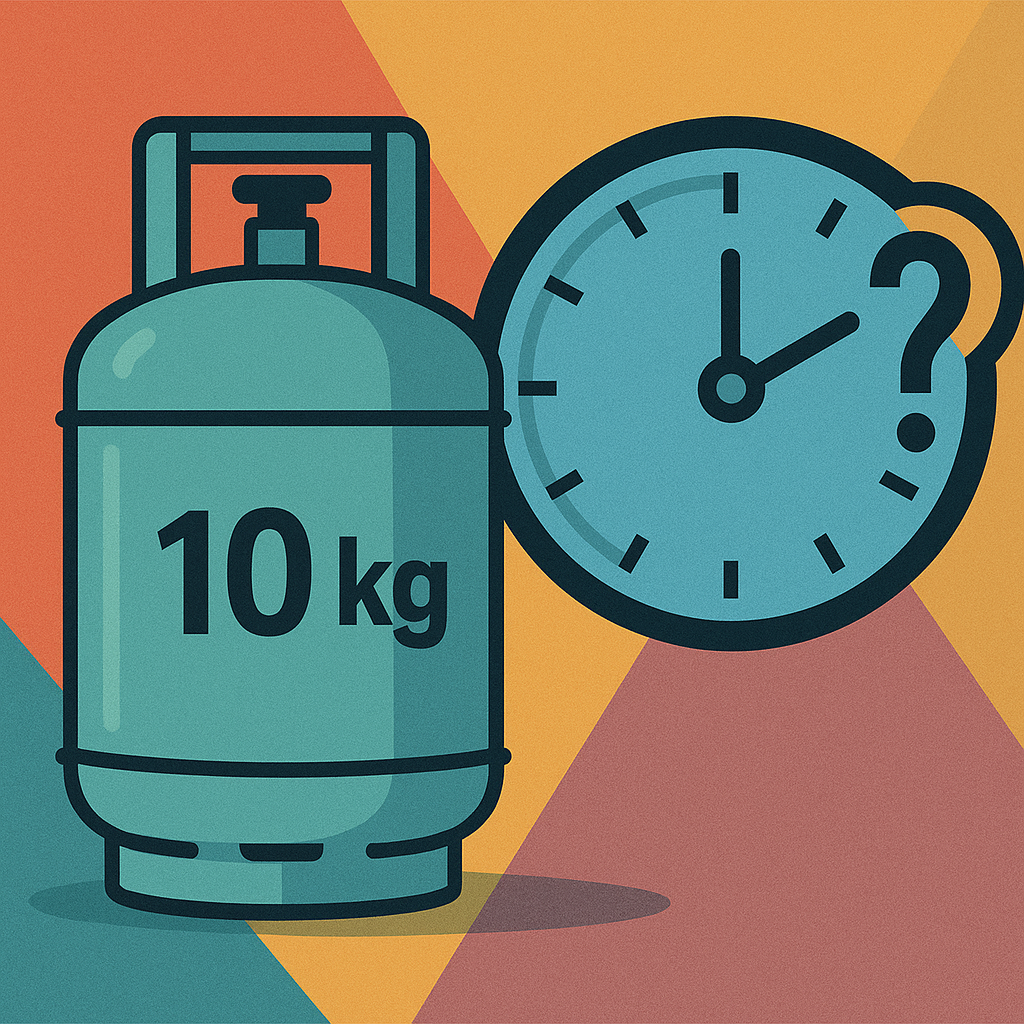When using propane as a fuel, the question often arises: How long does a propane cylinder actually last? Whether for barbecuing, heating or hot water, understanding the lifespan of a propane cylinder is crucial for efficient energy management and uninterrupted use. In this guide, you will learn which factors influence consumption, which cylinder sizes are commonly used in Europe, how to calculate propane consumption and which maintenance tips will help extend the life of your gas cylinder.
1 What is a propane cylinder?
A propane gas cylinder serves as the main storage container for liquefied petroleum gas (LPG), usually in the form of propane. Its service life directly determines how long the gas supply will last for various applications. Before we go into detail, let’s look at the most important factors that influence the use and durability of a propane cylinder.
2 Factors that influence the service life of a propane cylinder
1. appliance efficiency: The energy efficiency of gas-powered appliances has a direct impact on gas consumption. Highly efficient heating or grilling appliances use propane more economically, which means the cylinder lasts longer and costs are reduced.
2. climate and weather conditions: In colder regions of Europe – e.g. in Germany, Austria or Switzerland – consumption increases significantly during the heating season. During longer periods of cold weather, heating appliances and hot water systems are more heavily used, which means that the gas supply is depleted more quickly.
3. frequency and pattern of use: Households that use several propane-powered appliances at the same time or all year round consume significantly more gas than seasonal users. Conscious use of energy and efficient usage patterns significantly extend the useful life of a gas cylinder.
4. maintenance and care: Regular inspections and maintenance measures are essential. This includes leak tests, corrosion checks and compliance with safety regulations. Proper storage – dry, ventilated and protected from direct sunlight – significantly increases the service life.
3 Common propane gas cylinders in Europe
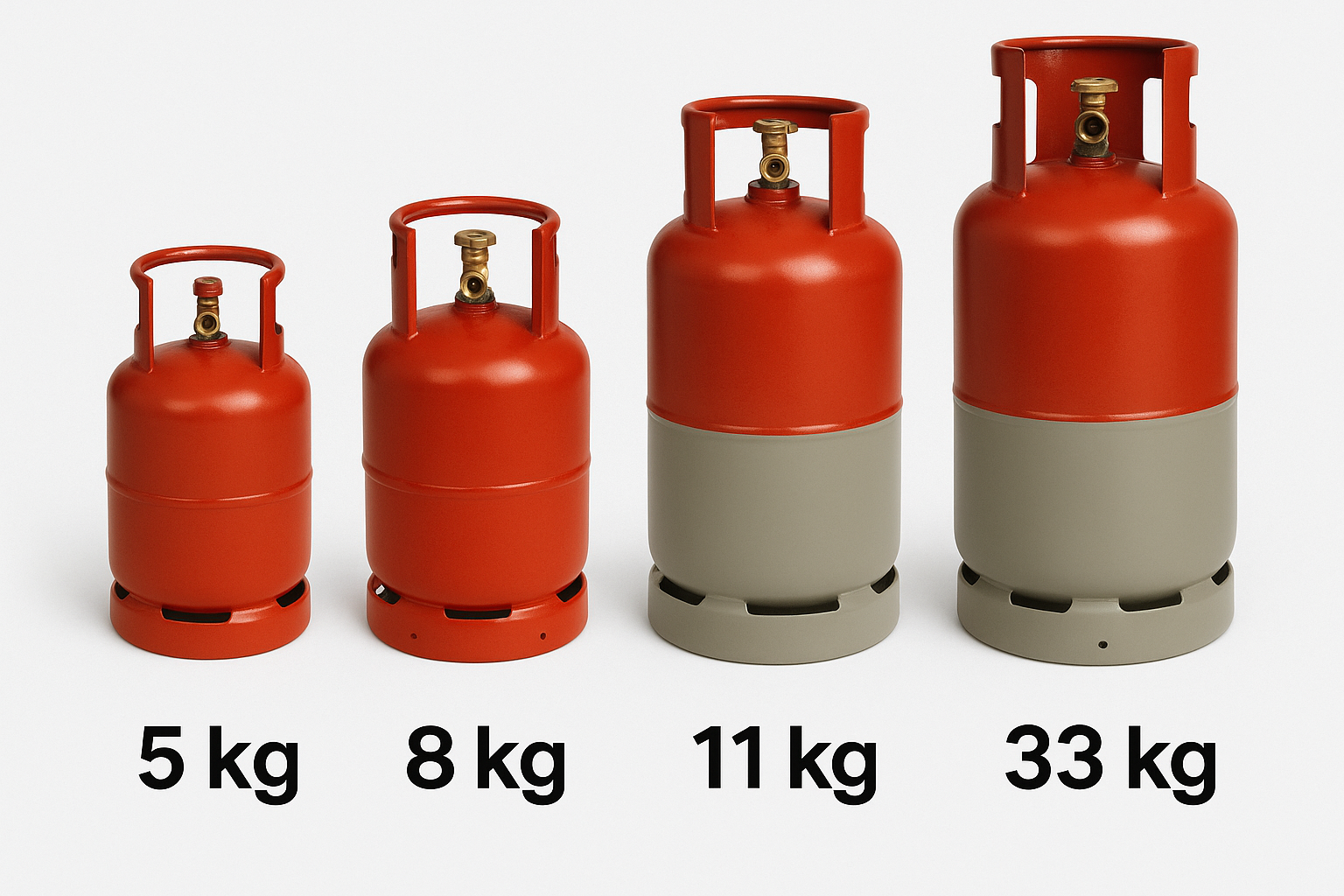
Various standard sizes and systems are in use in Europe. The most common are
- 5 kg gas cylinders – ideal for small gas barbecues or camping stoves
- 8 kg or 10 kg bottles – frequently used for patio heaters and fireplaces
- 11 kg bottles – the standard for barbecues, mushroom heaters or fireplaces (e.g. Elementi fire tables)
- 33 kg bottles – for intensive applications or commercial use
- Stationary tanks (500 l – 3,000 l) – for domestic heating and hot water systems
In Switzerland and Germany, aluminum and steel bottles are equally common, with aluminum bottles being lighter and particularly suitable for mobile applications. In contrast, deposit systems with country-specific connections are often used in France and Italy.
4 Typical areas of application
Smaller gas cylinders, such as 5-11 kg, are mostly used for barbecues, mobile fireplaces and camping equipment. Larger tanks or 33 kg cylinders are often used for heating systems, hot water systems or permanently installed fireplaces.
5 Propane gas for barbecuing
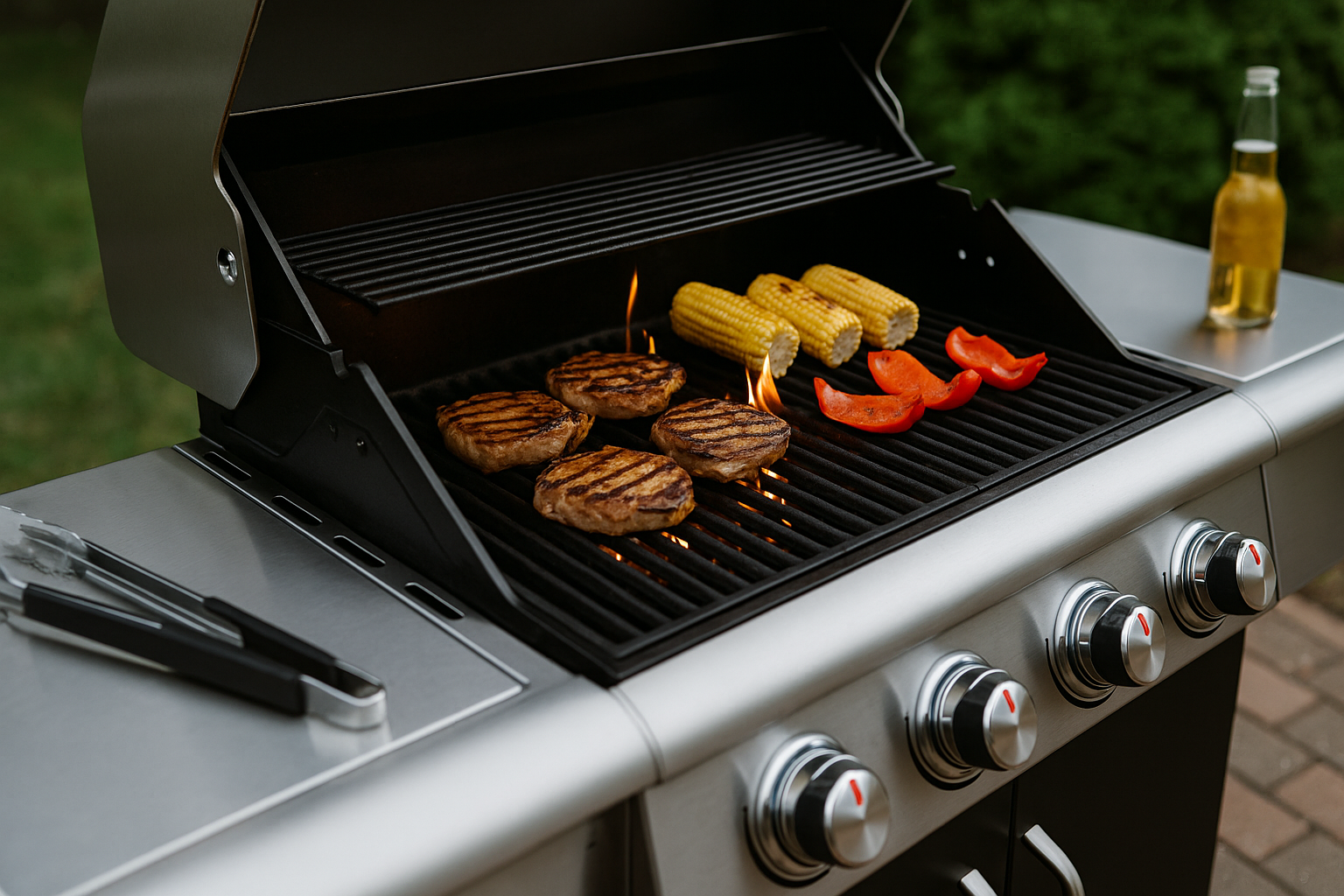
5 kg or 11 kg cylinders are usually used for barbecues or table-top fires. These provide enough gas for several barbecue evenings. For higher consumption – such as fireplaces with over 50,000 BTU – we recommend connecting a 33 kg cylinder or a larger tank.
6 Propane gas for heating and hot water
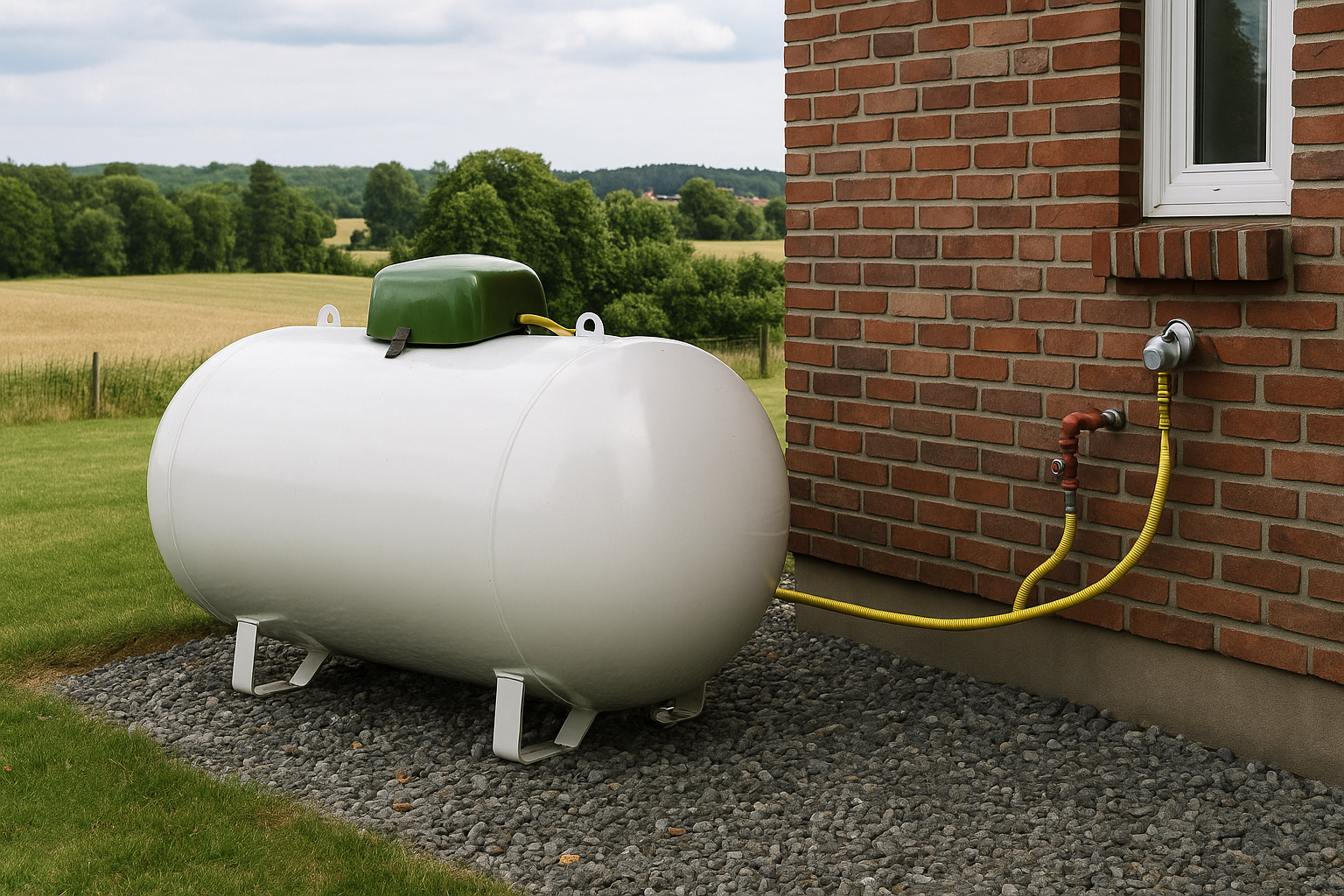
In rural regions of Europe where there is no natural gas connection, stationary propane tanks (500 – 3,000 l) are widely used. These reliably supply heating systems, hot water systems and large fireplaces with energy for months on end.
7 Propane for fireplaces and outdoor areas
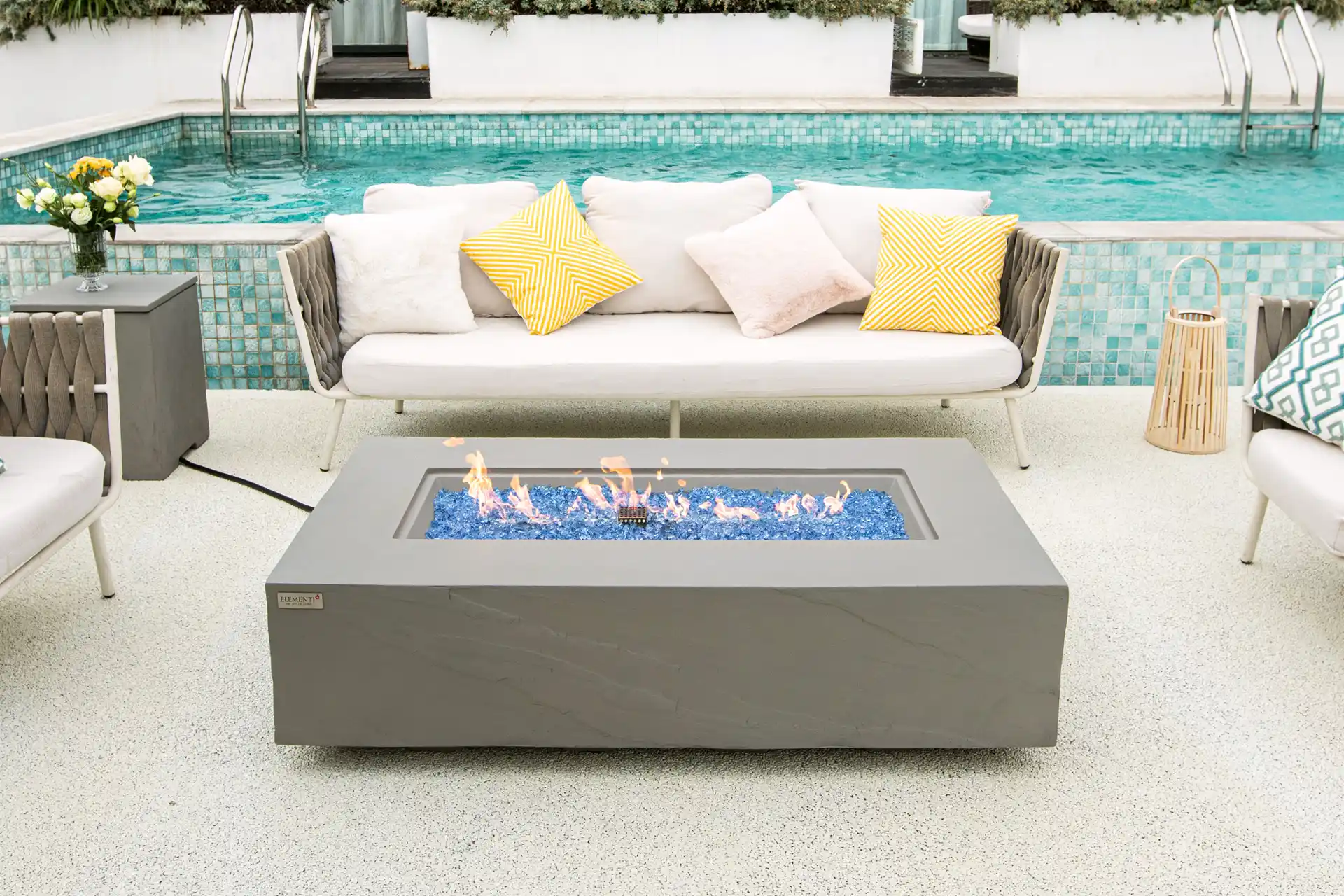
Propane gas offers a clean, efficient and readily available source of energy for outdoor fireplaces. Whether for cozy evenings in the garden, on the patio or in the catering sector – propane creates a warm and stylish atmosphere.
8 Understanding BTU – the basis for consumption calculations
The British Thermal Unit (BTU) measures the heat output of an appliance. The higher the BTU value, the more heat the appliance produces per hour. Knowing the BTU value of your appliances is crucial to realistically calculate the gas consumption. Example: An Elementi fireplace such as the “Granville” model has around 45,000 BTU.
9 Calculating the service life of a propane cylinder
1️⃣ Determine the total BTU output: Add up the BTU values of all appliances that you want to operate at the same time.
2️⃣ Check filling quantity: The fill quantity is specified on the cylinder or in the data sheet (e.g. 11 kg or 33 kg).
3️⃣ Calculate energy content: 1 kg propane ≈ 13.6 kWh ≈ 46,000 BTU.
4️⃣ Determine burn time: Total energy (in BTU) ÷ appliance output (in BTU/h) = hours of use.
Or use our BTU calculator to conveniently calculate the running time.
10 Tips for the correct maintenance of propane cylinders
✅ Check seals and valves regularly for leaks or rust.
✅ Ensure adequate ventilation at the installation site.
✅ Only use approved hoses and regulators (20 mbar / 30 mbar depending on the country).
✅ Always store gas cylinders upright, dry and away from heat sources.
✅ If a valve is jammed, never force it open – contact a specialist company.
11 Conclusion
Knowing the service life and consumption of a propane cylinder is crucial to ensure a safe and efficient energy supply. You can significantly extend the life of your propane cylinder by using the right size cylinder, carrying out regular maintenance and using the fuel wisely. So you can enjoy the convenience, safety and reliability of propane as a versatile energy source at all times when barbecuing, heating or relaxing by the fire.
12 Frequently asked questions (FAQ)
12.1 How long does an 11 kg propane cylinder last?
On average, an 11 kg propane gas cylinder is sufficient for around 18 – 20 hours of continuous operation with a consumption of around 1 kg / hour. The actual duration depends on the appliance output (BTU), the outside temperature and the intensity of use.
12.2 Does propane gas deteriorate over time?
Propane has no expiration date and does not lose its ability to burn even after years, as long as the cylinder is stored tightly and correctly. Unlike petrol or diesel, propane does not age – a clear advantage for long-term storage.
12.3 Which gas cylinders are the most common in Europe?
In Germany, Austria and Switzerland, 5 kg, 8 kg, 11 kg and 33 kg bottles are the most common. In France, Spain and Italy there are country-specific systems (e.g. Butagaz, Repsol, or Campingaz). When traveling or moving within Europe, pay attention to the respective connections and pressure regulators (20 mbar / 30 mbar / 37 mbar).









